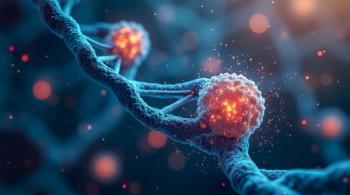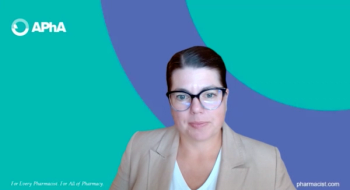
Evidence Base Growing, But More Needed to Tailor Treatments to Patients in PTSD
Evidence of who gets post-traumatic stress disorder, how genetics plays a role, and how to treat it is growing, but much work remains to help the estimated 3.5% of the population who suffer its effects in any given year, according to Murray B. Stein, MD, MPH, professor of Psychiatry and Family and Preventive Medicine, and vice chair for Clinical Research in Psychiatry at the University of California, San Diego.
Evidence of who gets post-traumatic stress disorder (PTSD), how genetics plays a role, and how to treat it is growing, but much work remains to help the estimated 3.5% of the population who suffer its effects in any given year, according to Murray B. Stein, MD, MPH, professor of Psychiatry and Family and Preventive Medicine, and vice chair for Clinical Research in Psychiatry at the University of California, San Diego.
Dr Stein, who also serves as a staff psychiatrist in the large VA San Diego Healthcare System, has seen the incidence of PTSD increase over the past decade among both veterans and active-duty military personnel who have served in the conflicts in Iraq and Afghanistan. The knowledge gained from these men and women, combined with advances in genetics research, have enriched understanding of the disease, he told attendees Sunday at the US Psychiatric and Mental Health Congress, being held in Orlando, Florida.
While there are only 2 FDA-approved therapies specifically for PTSD — sertraline and paroxetine — there are many other therapies, including venlafaxine ER and selective serotonin reuptake inhibitors (SSRIs), which are used in practice, in part because of the disorder’s comorbidity with major depression, substance, and chronic pain, Dr Stein said.
However, the distinguishing features of PTSD — hyperarousal, avoidance of stressors, re-experiencing, anger, and sleeplessness — often require treatment that combines pharmacotherapy with intense psychotherapy by specially trained therapists, which Dr Stein said can be both expensive and difficult to provide.
One area of promise is the treatment of nightmares. In a study published last year, Dr Stein said, Prazosin’s effectiveness was so superior to placebo (64% versus 27%) that the trial was halted early.1
Dr Stein walked attendees through the updates in the criteria for PTSD in DSM-5, the new version of the Diagnostic and Statistical Manual of Mental Disorders, which is used not only by psychiatrists but also by the courts and disability insurers to determine payment issues. Dr Stein said about 1% of those who met the criteria under DSM-4 no longer do, although they may still need care.
PTSD is associated with the military, but the disorder also occurs among crime victims, especially women who have been raped; among those who have lost their home in a natural disaster or a fire, and it was seen among those who were evacuated from the World Trade Centers on September 11, 2001. The government is taking steps to learn more through the Millennium cohort study, which will track more than 75,000 military personnel deployed from 2001-2006 for a 21-year period.
So far, the study is finding 10-13 cases per 1000 person years, with a rate of 8% among those deployed in combat and 2% among those deployed in noncombat roles. Differences in PTSD and major depression among active-duty and National Guard service members have also been observed; a 2010 study found that 22.6% of National Guard service members showed some PTSD symptoms 6 months after deployment, compared with 14.6% of active-duty personnel.2 But even though more service members are seeking help, fear of derailing a career remains a problem: a study in 2011 compared self-reports of depression or PTSD when service members had to report by name and anonymously; the rate rose from 4.2% to 12.1%.3
What puts a person at risk? Having a history of anxiety or a mood disorder, a lower IQ, and a family history of PTSD can put someone at risk. Women are at higher risk than men. A connection between PTSD and weight gain is emerging. And, Dr Stein said, researchers are learning that specific genes put some people at higher risk of developing PTSD. A researcher at Northern Illinois University campus in DeKalb, Illinois, had just gathered data prior to a campus shooting that killed 6 people in 2008, and was able to compare PTSD symptoms before and afterward. Those who were carriers of the S gene had more symptoms, Dr Stein said.
Understanding who is at risk could ultimately lead to preventive measures to avoid PTSD among military personnel or others, he said.
References
- Raskind MA, Peterson K, Williams T, et al. A trial of prazosin for combat trauma PTSD with nightmares in active-duty soldiers returned from Iraq and Afghanistan. Am J Psychiatry. 2013;170(9):1003-1010.
- Thomas JL, Wilk JE, Riviere LA, et al. Prevalence of mental health problems and functional impairment among active component and National Guard 3 and 12 months following combat in Iraq. Arch Gen Psychiatry. 2010;67(6):614-23.
- Warner CH, Appenzeller GN, Grieger T, et al. Importance of anonymity to encourage honest reporting in mental health screening after combat deployment. Arch Gen Psychiatry. 2011;68(10):1065-1071.
Newsletter
Stay ahead of policy, cost, and value—subscribe to AJMC for expert insights at the intersection of clinical care and health economics.















































